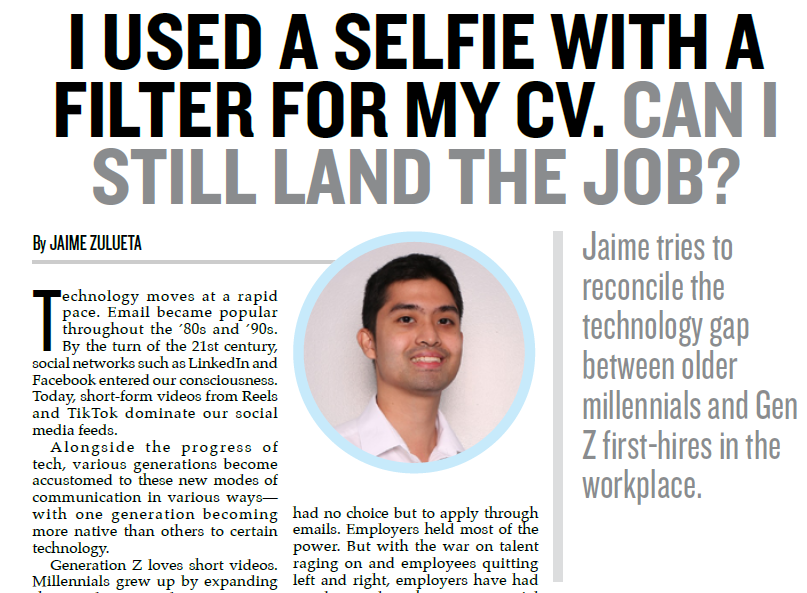By Jaime Zulueta
Jaime tries to reconcile the technology gap between older millennials and Gen Z first-hires in the workplace.
Technology moves at a rapid pace. Email became popular throughout the 80’s and 90’s. By the turn of the 21st century, social networks such as LinkedIn and Facebook entered our consciousness. Today, short form videos from Reels and Tiktok dominate our content.
Alongside the progress of tech, the various generations become accustomed to these new modes of communication – with one generation becoming more native than others to certain technology.
Generation Z loves short videos. Millennials grew up by expanding their online social connections. Meanwhile, baby boomers are still hanging on their pagers. I kid.
As the various human generations age and technology continues to develop, where do we draw the line between modes of communication, especially for more formal needs such as a job application?
Follow the power
The quick answer would be to follow the communication mode of the person who holds the power in the relationship.
Let us say you are a teenager who has to contact his or her grandmother. Theoretical grandma has a smartphone but mostly calls and texts. Would you force grandma to download social media? Or would you buy mobile load to send that text? Out of respect for her seniority, you would probably do the latter.
This power dynamic could easily shift even in business settings. Brands looking to sign up and coming influencers would have to reach out wherever the latter is present.
When the job market was smaller and communication means were mostly through email, a job applicant had no choice but to apply through emails. Employers held most of the power. But with the war on talent raging on and employees quitting left and right, employers have had to adapt and reach out to potential candidates in different ways.
Make it purposeful
Another answer would be to use the communication channel according to the purpose.
Work email and social network LinkedIn have been designated for professional use. It would not be strange to do a cold outreach on these channels. Meanwhile, more personal platforms such as Instagram or Facebook are more for family, friends, and personal experiences. Regardless of which generation you come from, tracking down someone’s personal Facebook account for a work-message could come across as stalking. Use it as the last resort.
If you are looking to build a personal relationship first before a professional one, then connecting through these platforms might not be a bad idea.
It’s about who you are really talking to
Lastly, there is the question of whom you are talking to.
Two millennials communicating with one another are more likely to do so over Messenger, WhatsApp, or Viber (quite popular in the Philippines). Personal and professional lives tend to mix and before you know it, you are sending documents to one another. Beyond the generation of the target audience, profession and industry also plays a big role.
For a person looking to get work in more creative industries such as branding or acting, then an artistic license comes into play. This person could provide a Tiktok video resume or a colorful pitch deck. In many cases, social media accounts turn intothe portfolio. Having a large following online in itself is social proof.
In conclusion, there will always be a gap
As technology continues to move forward, new ways of communication will come to life. One day people could be talking with brainwaves. Whatever the case may be, the way we communicate must also adapt. There will be instances where one communication form is taboo while in other cases they are preferred. Be prepared and study up on the norms!



